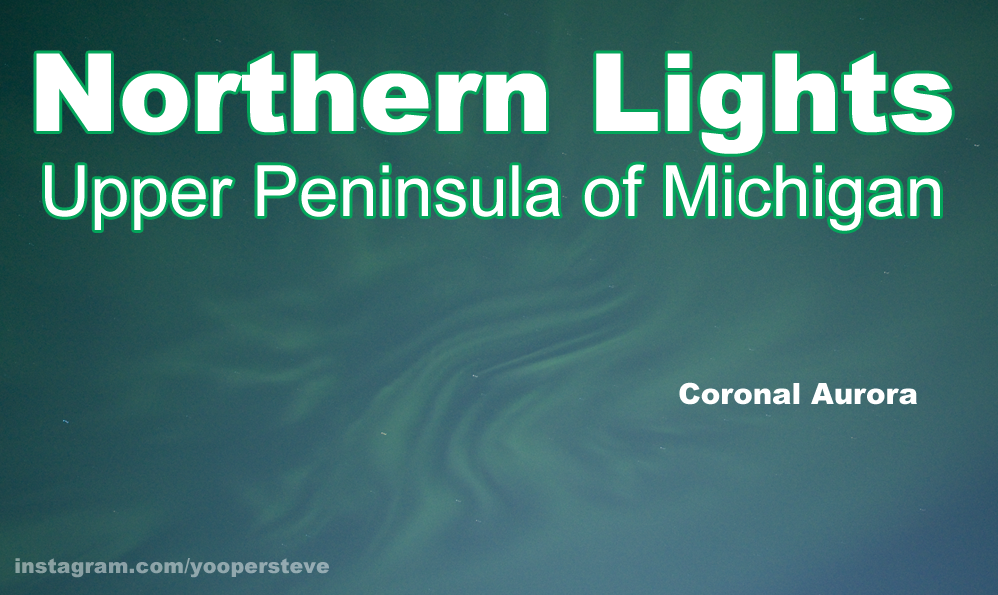

The Northern Lights (Aurora Borealis) are wonderful to see, each time is special and unique, no geomagnetic storm is the ever the same. Many people list seeing the Northern Lights as a "Bucket List" item. Where we are located in the Northern Hemisphere allows us many opportunities throughout the year to view the Northern Lights, just another thing that makes the Upper Peninsula so special.
Did you find the info and map useful? Feel free to make a small donation.
Yooper Steve is a professional photographer, filmmaker, and tour guide located in the Upper Peninsula of Michigan. Steve specializes in Auroras, waterfalls, and landscape photography. There aren't many places in the U.P. that Steve hasn't been to.
Guided Tours by Yooper Steve - UpperPeninsulaTours.com
No workshops scheduled currently, stay tuned for future dates.The northern lights displays can be seen almost every day out of the year in places like Fairbanks, Alaska, Central Canada, Iceland, Northern Finland, or Northern Norway. Here in the lower 48 states Northern Minnesota, Northern Wisconsin, and the Upper Peninsula of Michigan are your best bets for seeing the Northern Lights in your lifetime if you don't want to travel as far. These locations in the lower 48 you are able to see the Northern Lights 10-50 times a year, however the majority of those Aurora displays aren't very strong and only photographers can see much of anything. The stronger geomagnetic storms are able to be seen with the naked eyes easily. If you are expecting to see the Northern Lights in color like you see in photographs, you will most likely be disappointed, in the UP and a few other lower 48 states it is rare to see them with much color unless you are photographing them.
Statistically the Auroras are strongest, or should I say more active around the spring equinox and fall equinox. They are most prominent during the months of February, March, April, September, and October. Your best opportunity usually is during the month of Sept and into the first few weeks of October. The best month for the clearest skies is usually March. Like I mentioned above, the Northern Lights can be seen just about any day of the year from certain areas on earth.
The Northern Lights happen because electric charged particles travel magnetic field lines into the atmosphere, gases get excited then react with the particles in the atmosphere, these collisions are what causes the colors we see in the skies. More information below on this beautiful phenomenon called the Aurora Borealis (Aurora Australis, in the southern hemisphere), more commonly called the Northern Lights.
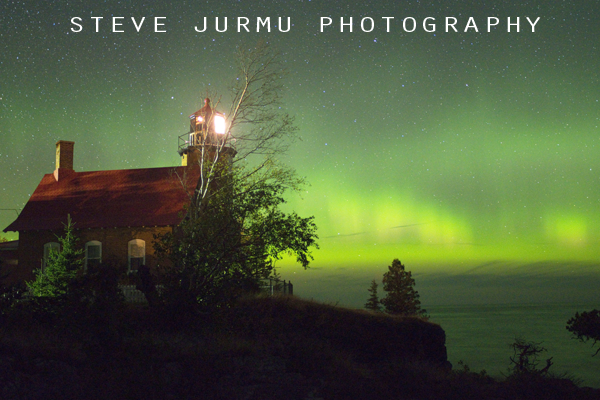
Photo by Yooper Steve
Northern Lights Eagle Harbor Lighthouse
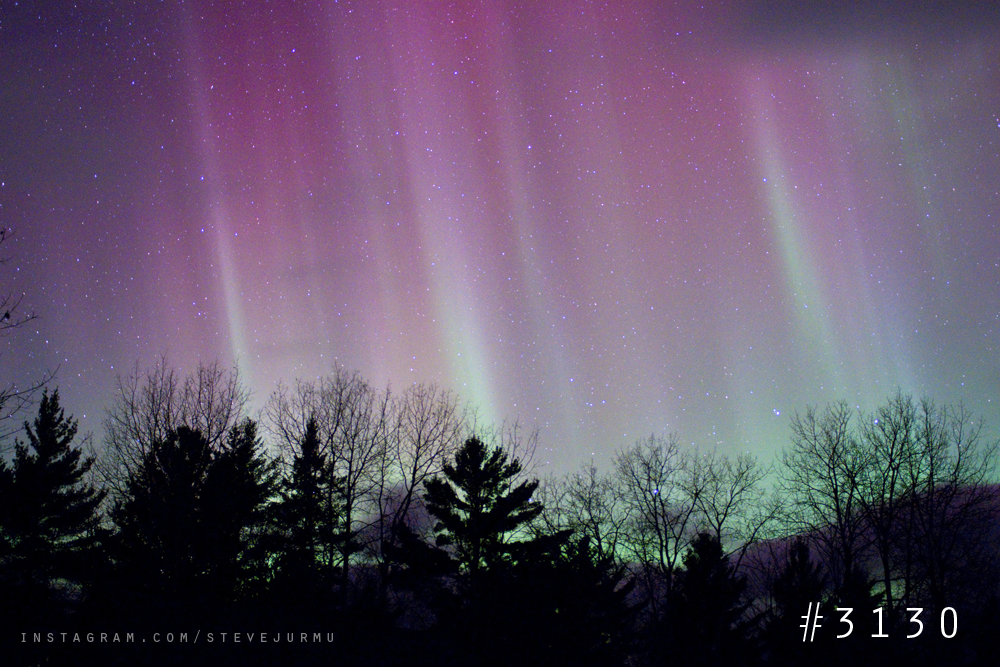
photo by Yooper Steve
Northern Lights over Lake Superior

Photo by Yooper Steve
Northern Lights at Houghton Breakers
Quick note: your eyes cannot usually see what the camera can see unless the geomagnetic storm is very strong which is often the case in AK and Canada (Yellowknife), northern Norway, Iceland, and Finland. You will often see a whiteish/greyish cloud/glow in the sky, when there are pillars you will see streaks, sometimes you'll see blobs of white/gray cloudy looking sky, or swirls. Sometimes you will see the lights moving across the sky pulsating like a strobe light.
Green - green is the most often seen color of Auroras it is a result of oxygen and nitrogen reacting together. This happens about 60-120mi up in the sky and takes about 2 sec to react and create the color.
The purpleish magenta pink - this is pure nitrogen molecules, you'll often see a vibrant color, these are instant reactions, and fast moving purples. This happens 50-60mi in the skies above your head.
The reds are very rare, the reactions take place higher in the sky at 120-1000+ miles in the sky. The oxygen atoms react in the thinned out atmosphere, 2-5min to give off the color, don't usually see it because the fast reacting gases steal the electrons so the reds never really get a chance to be seen. If there are spare electrons from a super storm then sometimes you can see reds, it is more often seen in AK, Canada, Northern Norway, Northern Finland, and Iceland, than where we are here in the lower 48 states.
Other colors you may sometimes see are white,
orange,
blue, and
yellow.
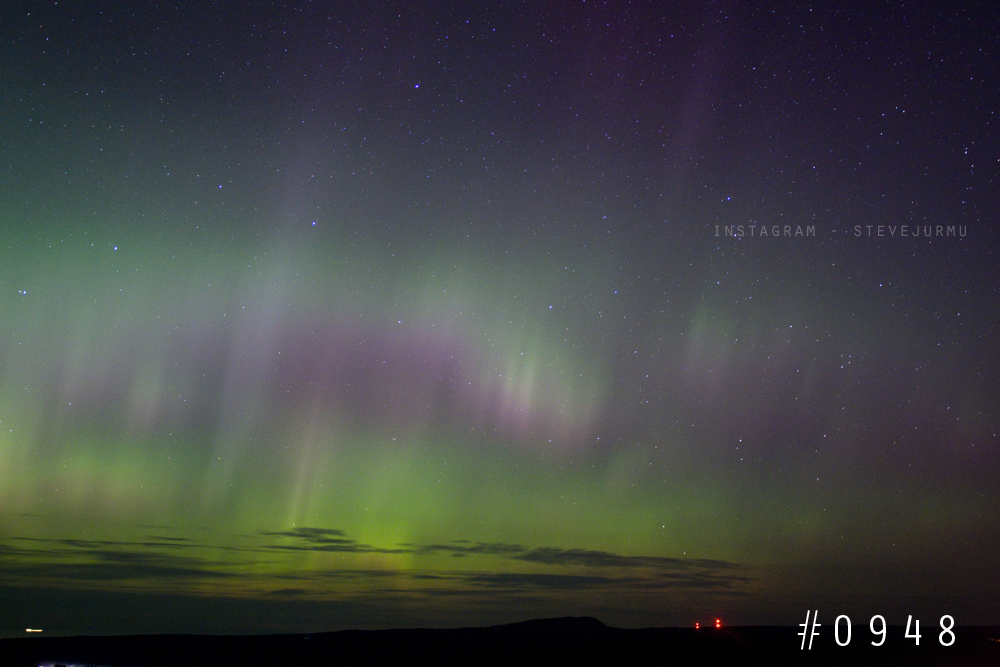

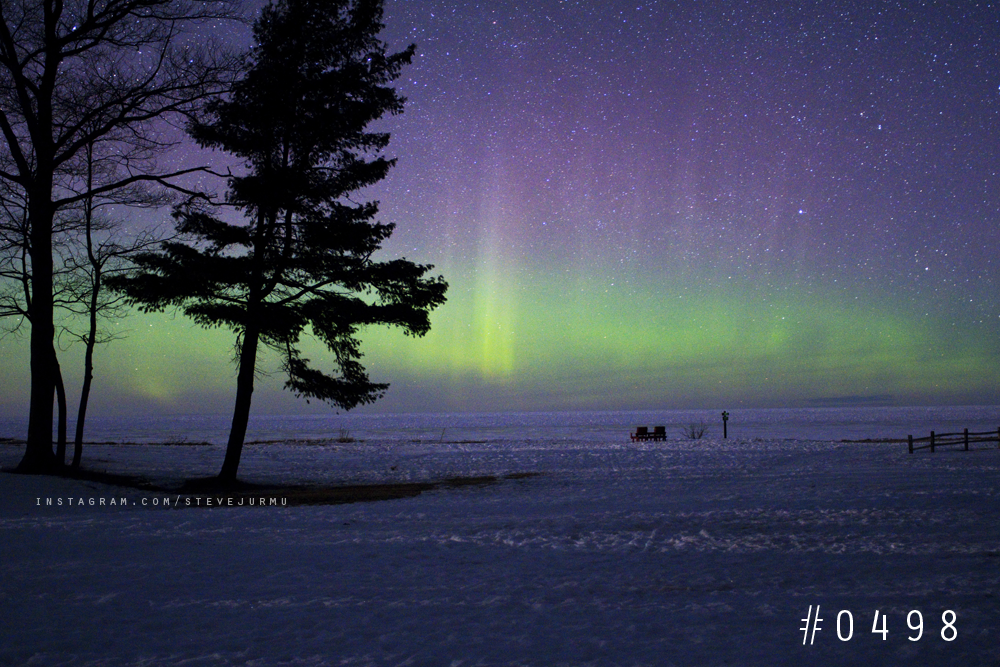

The Aurora Borealis shows can be very different throughout the solar activity in the atmosphere above our heads. Here are the types of Aurora displays.
Glow Auroras - This is the most often viewed Aurora display as it occurs most often. It is witnessed above the horizon with a uniform glowing green to yellowish color. If you see it higher in the sky it often appears like a gauze like veil. It almost always procedes and concludes a night of Northern Lights. It is most often viewed in Southern Canada and the Northern USA.
Arc Auroras - Arc Auroras come in two different types; pulsating arcs and quiet arcs. They are often seen high and low in the sky. The colors of Arc
Auroras are often yellow-greenish and sometimes will appear in pink and red. The arcs resemble a rainbow and they can be thin or have broad arcs. You will often notice the upper edges of the arc will often seem out of focus compared to the lower bottom edges which seem more crisp and distinct. It moves across the sky like a snake up and down or back and forth ossilating through the display above the horizon. Arcs can move quickly often changing very bright and red on the lower edges of the arc. If you see this aurora display you will often see it morph into a ray aurora display.
Ray Auroras - Ray auroras are narrow projections of light shooting upward in columns. The color of ray auroras are often light green and a mix of green and yellow, and often times appear to be pinkish magenta in color. These rays form high above the earth when the beams of charged electron particles hit the earths atmosphere. Rays often appear like a flashlight shining into the nightsky. These rays often move side to side, swaying slowly acoss the sky. The weaker the storm the less defined the rays are and the farther south you are the less distinct the pillars of light will be.
Band Auroras - Banding auroras often appear as a long belt across the sky. Colors of Band auroras are often pale green and a leafy green color. Sometimes you will see them in blue, violet, and sometimes red. They usually flow east to west and are usually seen coming up from the horizon and protruding upwards and across the sky. Band auroras can also form like arc auroras but banding auroras go futher into the sky than arc auroras. Somtimes banding auroras will form a semi-circle. Band auroras unlike arc auroras are constantly changing and moving across the sky, they are extremely jumpy. You will definitely be able to tell a banded aurora from an arc aurora because of this activity.
Curtain, Banner, and Rayed Arc Auroras - These types of auroras are really just aurora bands that cross the night sky. They will be often seen wavering across the night sky like a sheet in the wind or clothes flapping on a clothesline in a breeze. These auroras will sometimes morph into long aurora rays. The colors of these auroras tends to be mid-green, very light bright green. When lower in the sky they can often be blue to violet in color, sometimes even red.
Patch Auroras - The auroras can often resemeble fragmented auroras. They may appear like clouds in the sky, isolated patches of color, somewhat uniform. They can diffuse, pulsate, appear bright, often seen like a searchlight in the sky. Colors you will often see with patch auroras are in green, pale green, to dark green. On very rare occasions they may be deep red in color.
Coronal Auroras - Super cool looking aurora display is the corona aurora. These are also called crown auroras. Many northern lights fanatics will often say this is their favorite aurora to photograph and view. It is really beautiful for sure and has many beautiful features of light. It is more rare than the other types of auroras and they appear mostly overhead as an overhead crown or blossoming burst of rays of light to the earth. They can appear to be pink, red, and often green to yellowish green.
Flaming Auroras - Flaming auroras are a super energetic display of aurora activity. You will often see these as sudden waves of light across the sky and they come and go quickly. They can appear to be an arc, patch, and or band type of aurora. At the peak of the display you will often see it awakens and jumps skyward into a flame like display. One moment it is there another it is gone, you'll want use a fast shuttespeed when photographing these types. These are very fun to watch as they ever change in the sky. They will appear in many different colors because the are a combination of aurora displays.


The Aurora Borealis is seen regularly in Alaska, the northern areas of Canada, Greenland, Iceland, Finland, Norway, and Sweden.
In the lower 48 in the United States your best chances of seeing the Northern Lights will be in the Upper Peninsula of Michigan, Northern Wisconsin, and Northern Minnesota. At times when the solar storm is very strong you may often see lights further south, east, and west in the USA. If you are planning a trip and want to make sure you see the Northern Lights, you should visit Fairbanks, Alaska, it is one of the best locations in the world to view the Aurora. It is definitely the most popular because of the ease of getting to Fairbanks to the Skandanavian countries and Yellowknife Canada. The magnetic field line above Fairbanks is a hotspot for activity throughout the year which also makes it the perfect spot to view the Aurora. Also Yellowknife Canada is a great place to view the Northern Lights, it usually has clear skies, not as easy to get to as Fairbanks, AK. In these northern locations you will see the Aurora with your eyes in the colors seen in the photos and videos which you often see. At the lower latitudes like in the Upper Peninsula the geomagnetic storm is further away from us so the colors often appear to be white and gray and which often times only photographers are able to see through their cameras. During stronger storms you can sometimes see the Aurora moving around in the sky it dances around and pulsates, when it is like this it is awesome to watch.
Visit the website links on the right of the page to learn more about the Northern Lights
Hope you get a chance soon to see the lights dance! If you want to join me on a Photography Tour contact me and Join one of the Upper Peninsula Tours